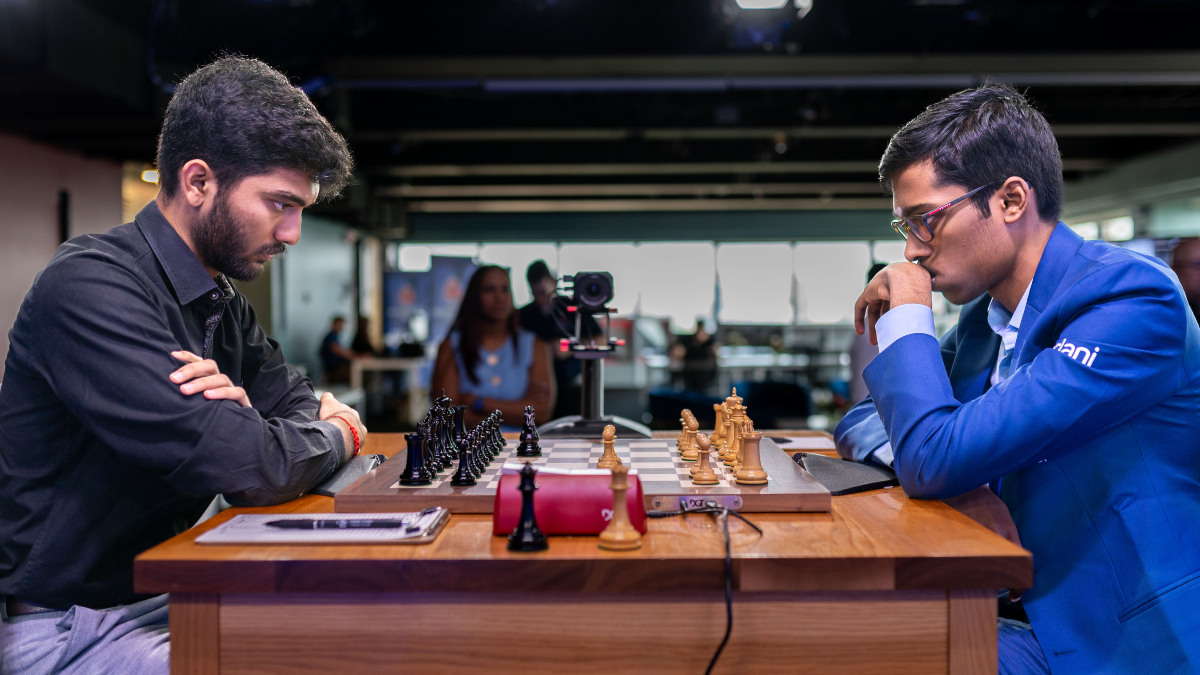India had made its presence felt for the first time in the world of chess in the late 1980s and through the 1990s with Viswanathan Anand’s emergence as India’s first Grandmaster as well as world-class player, which inspired countless others to follow his footsteps and compete on the global stage.
However, it wasn’t until last year that Indians finally began to establish itself as a force in the sport, both in the ‘Open’ as well as ‘Women’ categories. For the first time in the history of Indian chess, India was no longer dependent on just one individual to make them proud – they had an entire army gunning for glory.
The proof of India’s rise as a chess nation lies in the FIDE ratings – with three Indians among the top-10 in the Classical format of the ‘Open’ category. As for the women, there are three Indians within the top-15.
Also Read | Gukesh explains factor behind chess boom in India besides Anand's inspirational touch
Before we delve into India’s sudden rise in chess, we take a look at what the ratings are all about and how they work.
What are FIDE ratings and how do they work?
Chess ratings essentially determine the strength of an individual player and his/her probable performance against another opponent. It is a number that can go from 100 up to infinity – theoretically, at the very least.
There are various rating systems that are utilised by a variety of chess associations and organisations. The one used by FIDE and websites such as chess24.com is the Elo Rating system, developed by Hungarian-American chess master and physics professor Arpad Elo. It was officially adopted by the US Chess Federation in 1960 and by FIDE in 1970.
The system updates a player’s rating after each game on the basis of their performance against their opponents – a victory boosts their rating and a defeat decreases it.
Elo had devised a formula for calculating a player’s latest rating which he had termed ’linear approximation’, which goes as follows: Rnew = Rold + K/2 (W – L + ½ [EiDi/C]).
Here’s ‘Rold’ and ‘Rnew’ stand for the old and current ratings of a player, while ‘Di’ is the rating of the opponent after subtracting the former’s rating. ‘W’ and ‘L’ stand for the number of wins and losses respectively while the values of ‘C’ and ‘K’ are set at 200 and 32 respectively.
FIDE ratings are divided into several categories – in the ‘Open’ and ‘Women’ categories across the Standard, Rapid and Blitz time controls. It also publishes ratings for ‘Juniors’ and ‘Girls’ in the three formats.
And while the FIDE ratings are updated every month, a players live rating after a game can be accessed on websites such as 2700chess.com.
Why are Indians suddenly dominating chess?
Indians aren’t outright dominating chess the way they had bossed field hockey form the late 1920s to the 1960s, especially since Magnus Carlsen is still reigning supreme in all three formats, with American Grandmasters Hikaru Nakamura and Fabiano Caruana occupying the next two spots in the Classical ratings.
However, the fact that there are three Indians inside the top-10 in the ‘Open’ category has a lot to do with how the trio of D Gukesh, R Praggnanandhaa and Arjun Erigaisi have headlined the chess revolution in India over the last year.
Also Read | Praggnanandhaa has historic world No. 3 FIDE ranking spot up for grabs after stunning Gukesh
Gukesh, after all, had become the youngest world champion in chess history in December and was also the youngest winner in Candidates history. Praggnanandhaa has had his fair share of success this year, winning the Tata Steel Chess in February as well as Superbet Chess Classic Romania, UzChess Cup and other events.
Let’s not forget Arjun becoming only the second player after the legendary Anand to breach the 2800-rating barrier, and the fact that he has been going the distance in recent tournaments and is certainly better than Gukesh and Pragg when it comes to the faster time controls.
And it’s not just the young lads – how can we forget half of the quarter-final slots at the recently-concluded FIDE Women’s World Cup going to Indians, with Divya Deshmukh and Koneru Humpy setting up a historic all-Indian final that was won the former.
Koneru had also made history in December by becoming only the second player ever to be crowned women’s rapid world champion.
Last, but not the last, India’s historic double gold at the 45th Olympiad last year where both the men and women shone bright certainly gives a fair idea of the direction that chess is headed towards in the cricket-mad nation.


)
)
)
)
)
)
)
)
)



